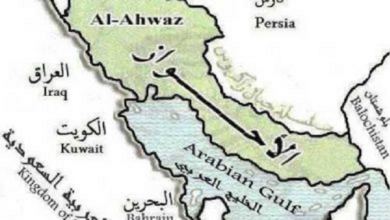
An Overview of the Geography, Name, and History of the Ahwaz Region Since Ancient Times”: A study that traces the history of Ahwaz prior to the emergence of the Persians (1)
Under the title “A Glimpse into the Geography, Appellation, and Historical Background of the Ahwaz Region Since Ancient Times” in Issue 17 of the “Arab Renaissance Bulletin,” published by the Global Arab Renaissance Institute, Dr. Qusay Mansour AlTurki, a researcher and scholar specializing in the antiquities and civilization of the Arab Gulf, examined the history of Ahwaz from ancient times.
Ahwaz in the ancient language:
Researcher Qusay Mansour AlTurki explained that the term “Tamm” has been linked to Ahwaz and the region as a whole since the earliest Sumerian language, signifying “elevated lands.” It was also noted in Sumerian as “ELAMMAKI,” referring to the territory of Elam.
In Akkadian (an ancient Semitic language), the name appeared with the same term and almost identical meaning, in the form of “ELAMTU,” designating the Elamite territory. The Sumerians and Akkadians used it to describe the geographical area east of their regions, with geographical and cultural implications suggesting that the region encompassed plateaus and mountains to the east of the alluvial plains, as confirmed by contemporary studies.
In ancient Elamite, the Elamites themselves referred to it as “Khâtâmti/Khâltâmti,” meaning “land of the lord or deity.” In late Persian, the Elamite territory was referred to as “Uvaja/Khuvaja,” and it seems that this phrasing in the name led to the term “Khuz” or “Khuzi.”
An Elamite history predating that of the Persians:
In this study, the researcher explained that references to Persia do not extend beyond the 9th century BC. The first significant historical reference comes from the writings of the Assyrian king “Shalmaneser III,” specifically in 823 BC and 853 BC, mentioning the tribes “Amadi” or “Mada” (the Medes) and “Parsua” or “Parsa” (the Persians). These two tribes were frequently mentioned in the later writings of Assyrian kings, suggesting that they were the foremost and most renowned tribes in Iranian geography.




